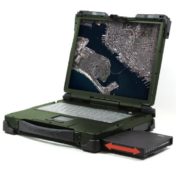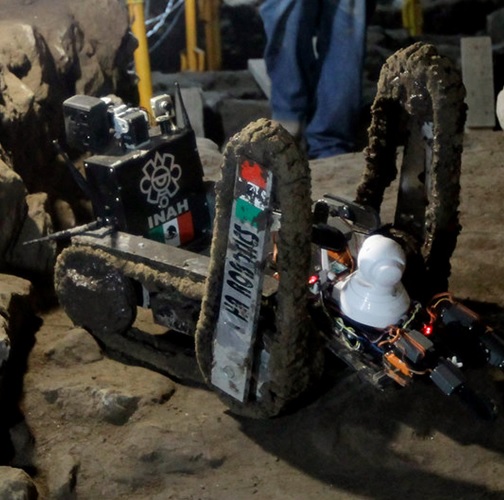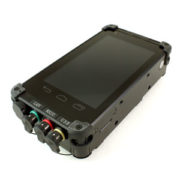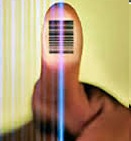Every summer, I have a front-row seat to hell. I live at the foothills of the San Gabriel Mountains, just east of Los Angeles. During this time of year I can walk out of my house and see hills pockmarked by flames, as if they were covered by the campfires of an invading hoard. All […]
File this under things that make America great. Evidently, some big box stores sell impressively sized barrels of a food-like substance called “cheese balls.” No one can figure out what to do with them (eating them is apparently out of the question). A YouTube enthusiast, NightHawkInLight, has an extensive video channel featuring do-it-yourself projects, such as making […]
AMREL salutes those who have fallen in the the line of service and the living who protect us every day.
An attack on them is an attack on all of us.

It is worth remembering that before the shooting, relations between protesters and the Dallas police were peaceful with both sides going out of their way to praise each other.

Dallas Police officer with a protester
While hate and bigotry are real, so are love and respect.
 Wishes you and your family a happy and safe July 4th
Wishes you and your family a happy and safe July 4th
There are many ways of celebrating our freedom. Bar-B-Qs. Parades. Watching videos of people doing dangerous things with fireworks.
Below are three of our favorite dangerous fireworks videos.
Needless to say, don’t try this at home.
Firework Minigun
Don’t try this at home. Really.
Roman Candle Minigun (1001 shots in 45 seconds)
Remember how we said you shouldn’t try to replicate the stunt in the first video? That goes double for this one.
HOMEMADE FIREBALL CANNONS!! 1500+ Fireballs
For some reason, this guy doesn’t do anything dangerous the first 7 or 8 minutes of this video.
BTW, for the love of heaven, don’t try this at home!
Once again we stare into the opaque crystal ball that is Washington and try to divine the fate of this year’s Defense appropriation bill.
The good news, sort of Out of the 12 appropriation bills facing Congress, Defense is the one that will most likely pass in time for due date. That is the view of Saxby Chambliss, a Southern senator who sounds and looks just like an actor playing a Southern senator from a 1930’s movie. Speaking at a recent Bloomberg web conference, he sounded cautiously optimistic, noting that the Senate and House have already passed versions of Defense bill, ahead of where we were at last year.
On the other hand… The House and Senate bills are different. The House authorized $583 billion, while the Senate funded $602 billion (these amounts vary in news reports, and to a certain extent are subject to interpretation; the Defense budget in a tricky multi-factorial affair).
Significantly, the House wants to diminish the Overseas Contingency Operation (OCO) fund, which is a gimmick designed to circumvent sequestration. In fact they shifted funds over to the base budget in order to mitigate the Army and Marine’s planned drawdown (and increase military pay by 2.1%, not the proposed 1.8%). The President is not amused and has threatened a veto over this and other issues.
The other issues The Senate, led by Senate Armed Services Chairman John McCain, has proposed that the position of Undersecretary of Defense for Acquisition, Technology, and Logistics (ALT) be eliminated. Responsibilities are to be divided between new Undersecretary of Defense for Research and Engineering, or USD(R&E), and the renamed Undersecretary of Management and Support, or USD(M&S). Somehow, this bureaucratic reshuffle is supposed to make it easier for the military to adopt new technology.
Dear reader, does this make sense to you? I have been writing and reading about the acquisition for novel technology by the Department of Defense for several years now, and I can’t understand how this will help at all. If you have any ideas about this particular change, pro or con, please email me at editor@amrel.com. I need someone to explain this to me.
The administration doesn’t like these proposed changes, accuses Congress of “micromanaging,” and promises to veto these budgets. Other issues that the administration has with Congress’s Defense appropriation concern the proposed closing of Guantanamo, drafting of women, the role of readiness, and miscellaneous non-defense issues.
Don’t fear the veto The threat of the veto and the fight between the executive and legislative branches don’t overly concern Saxby Chambliss. This is par for the course, and even with a veto, there is more than enough time to pass the Defense bill.
Why are non-Defense issues significant in the Defense budget? One of the most interesting parts of the Bloomberg webinar was Saxby Chambliss’ description of the Congressional dynamics behind the Defense budget.
Congress has a lot of relatively new representatives who have no experience of the old days, when ideological and partisan opponents routinely worked together in a relatively non-contentious manner to pass bills. Besides Intelligence (which has its own problems), Defense is the only appropriation that is funded yearly as opposed to multi-yearly. It is one of the few times that congressmen from opposite sides of the aisle actually talk and work with each other. This is the new “normal.” As a result, a lot of non-Defense items (which get blocked in the polarized deadlocked Congress) get linked to the Defense budget.
I know what you did last session Another factor in the yearly Defense drama is the elimination of earmarks, and the severe limiting of riders. In the past, these “greased” the gears of the appropriation process. Now everything has to be fought out in the open, which is subjected to heightened scrutiny of the internet. It is common that when a proposal is first made by a representative in Congress, an immediate hostile reaction in social media follows in real time.
If you think things are bad now …. An observation made at the Bloomberg webinar was that the current administration is avoiding critical decisions in Iraq and Afghanistan and is letting the clock run out. The next president will have some hard choices to face.
No Defense bill until November In spite of the Saxby Chambliss’ guarded optimism, the consensus of the Bloomberg webinar participants was that the Defense bill will probably not pass until the “lame duck” session after the election. Once the poll results are known for sure, the losing party will be more motivated to negotiate a compromise.
Watch for “continuing resolutions” One common “work around” when Congress gets paralyzed is the “continuing resolution.” This temporarily funds specific agencies and programs. If Congress goes this route, examine the length of the resolution carefully. It is a short or long term resolution? Will it kick the Defense budget mess over to the new Congress? Will it include the beleaguered OCO?
Of course, unexpected events, such as a new war, could significantly alter the dynamics of the appropriations process. Since AMREL supplies mission-critical rugged solutions to warfighters and other key defense personnel, we will keep a close eye on the fate of Defense funding. We will apprise you of future developments.
 American Reliance, Inc. (AMREL) and Airbus Defense and Space have partnered to integrate GATOR (Geospatial Appliance Targeted for Operational Response) into a rugged one-box laptop solution called the GATOR Rugged Geospatial Laptop. In the most difficult and demanding areas of the world, this encapsulated geospatial server enables easy access to geospatial data even when the internet isn’t available.
American Reliance, Inc. (AMREL) and Airbus Defense and Space have partnered to integrate GATOR (Geospatial Appliance Targeted for Operational Response) into a rugged one-box laptop solution called the GATOR Rugged Geospatial Laptop. In the most difficult and demanding areas of the world, this encapsulated geospatial server enables easy access to geospatial data even when the internet isn’t available.
Even in remote locations with uncertain connectivity or unavailable networks, operators now have geospatial intelligence at their fingertips. This integrated rugged hardware/geospatial software solution streams imagery and GIS (Geographic Information System) data into software environments such as Google Earth, FalconView, ArcGIS for Desktop, and GAME Fugitive. Data is viewable with an internet browser. The geospatial server GATOR is a useful tool for warfighters, first responders, exploratory crew, researchers, field workers, oil & mining crews, humanitarian/disaster relief, and utility staff.
The GATOR Rugged Geospatial Laptop is built on AMREL’s durable mobile computer platform. AMREL leverages their patented Flexbay technology, providing seamless connectivity between the GATOR module and the rugged laptop. The battle-grade laptop incorporates 30 years of AMREL rugged expertise, and is designed for quick customization and integration.
“The GATOR Rugged Geospatial Laptop is an ideal solution for situations where failure’s not an option,” said Linda Talcott, AMREL’s Director of Product Marketing. “It’s a perfect match. GATOR is designed to run mission critical geospatial applications in remote areas, while AMREL’s laptops have proven their ruggedness in the most challenging environments in the world.” she added.
“Integrating our GATOR appliance into the rugged laptops from AMREL enables us to offer a solution to first responders and field operators from the GEOINT Community who need support in isolated areas,” said Greg Buckman, Head of Airbus Defense and Space’s Intelligence Business activities in North America. “We are excited to see how this complete solution will provide mission-critical intelligence to users on the ground.”
To learn more about the GATOR Rugged Geospatial Laptop, please visit the Airbus Defense and Space booth, #325, at the Esri UC in San Diego, CA June 27 – June 30.
Learn more by visiting computers.amrel.com/gator. You can also contact Linda Talcott at 1 (800) 882-6735 x216 or lindat@amrel.com.
AMREL is always on the lookout for new applications for Unmanned Ground Vehicles (UGV), since we are the premier supplier of Operator Control Units for them. Bomb detection, guard duty, and farming are well-known uses for UGVs. To this list, we can add unlocking the secrets of a lost civilization.
For over 100 years, archeologists have been exploring the ruins of Teotihuacan, a location outside of Mexico City. Famous for its huge pyramids, it once housed 100,000 to 200,000 people, making it one of the largest cities in the world at that time. Almost nothing is known about the original inhabitants or why they inexplicably disappeared.
After a heavy rainstorm, Sergio Gomez, an archeologist who has devoted his career to studying the Teotihuacan ruins, noticed a sinkhole at the base of one of the pyramids. In best Indiana Jones fashion, he lowered himself by rope into the mysterious hole. No word about whether he wore a fedora or carried a whip. Nor were there any reports of snakes or giant rolling stone balls.
He descended approximately 45 feet into the dark, unknown, never-explored opening. Was he scared? According to him, he was terrified. However, at the end of descent, he discovered something that made the trip worthwhile; a man-made tunnel. Around 100 yards long, this underground passage eventually yielded 75,000 artifacts including seashells, animal bones, jewelry, pottery, rubber balls, obsidian knives, and green stone statuettes.
Excavation of the final end of the tunnel was critical. Located deep beneath the Temple of the Plumed Serpent, it was thought to hold vital information about the purpose of the tunnel, as well as pyramids themselves.
However, the tunnel narrowed significantly toward the end; no person could crawl through it. Using traditional mining techniques were out of the question, since they were too likely to damage the sensitive archaeological site.
Fortunately a university in Mexico City had a solution. Named for Aztec rain gods, Tlaloque and Tláloc II were two UGVs that had previously been used to explore Teotihuacan. A similar UGV had been used in an Egyptian tomb.
A 4×4 traction vehicle, Tlaloque 1 is only 20 cm in height, 30 cm wide, and 50 cm long. Located one at the back and one at the front, Its 2 remote-controlled camcorders can do 360 degree turns. It has its own lights and transmits images to an external computer monitor.
The larger meter-length Tláloc II is equipped with heavy duty tires, designed to navigate wet, muddy soil. Its meter-length mechanical arms, can chew through earth and clear obstacles. Equipped with bright lights as well as video cameras, it stores images on an on-board hard drive. It uses a laser to scan the topography. Unlike Tlaloque 1, Tláloc II is remote controlled by wireless means and carries an independent “insect” robot that has an infrared camera. Both the Tláloc II and the “insect” robot can be seen in the video at the end of this post.
Tláloc II and Tlaloque successfully transversed the 2,000 year old tunnel. Much to the archaeologists’ surprise, the UGVs didn’t discover a tomb at the end of the passageway, but instead a spacious cross-shaped chamber, with more jewelry and several statues. The purpose of the chambers is still being determined.
Although UGVs have been used before on archaeological digs, this is the first time robots have been instrumental in a major archaeological discovery. I suspect it won’t be the last.
As discussed in Ten ways mobile business solutions succeed and fail, integrating mobility into an enterprise’s communication network can be a tricky affair. Many businesses hand out smartphones to their employees, and expect wonderful benefits to just automatically roll in. A more thought-out strategy usually yields better results.
Recently, I heard a case study in which an enterprise had a mobile strategy that not only wasn’t working, but also was negatively impacting their bottom line. How they successfully transformed their communication network from a minus to a plus says a lot about the use of mobile devices in enterprise solutions.
The problem
A well-established Oil & Gas company had been using paper forms to collect and tabulate field data. This meant that:
- Paper forms had to be filled out by hand in the field under less than ideal conditions.
- The forms had to be transported by vehicle to the main office, often hours away.
- Information in the form had to be reentered into a digital format at the office.
Transportation of forms and copying data took a great deal of time and man-hours. In fact, Canvas, a cloud-based software service and mobile app platform, estimates that for each individual paper-based form used, the company suffered an additional expense of $50,000 per year in costs associated with printing, shipping, data entry, filing, storage and mandatory destruction.
There were other problems besides. Customers were unable to receive critical information in real-time. Managers had to delay crucial decisions. Important photographs sometimes became separated from reports. Paper reports were lost, damaged, or even stolen while in transit or in the field.
The company decided to use smartphones to collect field data electronically. By transitioning away from paper forms, it was hoped that the company could save time and money.
Unfortunately, when remote workers initially used their smartphones, the results were less than ideal. Not all oil rigs and remote locations have Wi-Fi-and cellular coverage. This led field workers to believe that they could not completely end their reliance on paper forms.
The company’s original mobile strategy was to communicate data through text messages. Text messages were often copied from paper forms which were then sent to the main office, where the text messages were reentered into a database. This copying and recopying significantly increased the chances of error. Furthermore, the words in the texts were often abbreviated or misspelled, which made the data entry even more challenging.
The biggest single problem was that every text was sent as a group message. When workers returned from the field, they would have to scroll through hundreds of texts to find the one they wanted. Reports to clients and internal stakeholders were delayed by hours or even days.
The solution
Canvas worked with this Oil & Gas company to implement a successful mobile strategy. Their solution featured digital forms that worked both off-line and on-line. This allowed workers to fill out forms on their smartphones while in the field, no matter what the coverage was. No more paper forms.
Migrating paper forms to the cloud (and local platforms) turned out to have a number of significant advantages, other than the obvious one of saving man-hours. Quality improved, because the forms used drop-down menus with fully written, correctly spelled words, rather than the previously utilized shortened text messages. Standardizing the data made analysis and sharing much easier. Clients were informed of the status of field locations in real time. People within the company got a searchable database which was linked to inventory control, catalogs, and other information management systems. In addition, time/GPS stamped photos and electronic signatures were easily linked to the forms.
Canvas specializes in this sort of form migration. They offered their client a choice of using user-friendly, web-based, build-your-own-app solutions, or simply buying one of the thousands of readymade apps that populate their store. They shepherded their client through the process in a matter of just a few weeks. What I found most remarkable is that they were able to implement this solution with virtually no IT support.
Fixing a poorly conceived solution is often harder than implementing an appropriate one in the first place. The fact that Canvas was able to do so in a short period of time with comparatively little resources speaks well of the flexibility and efficiency of their migration services.
Any cloud-based solution that is used in a challenging environment works better on a rugged, reliable platform. AMREL and Canvas have teamed up to offer new, innovative solutions for business’ information management needs. Use our lightweight fully rugged tablets for remote evaluations, inspections, data collection, reporting, dispatching, invoicing and estimation. To watch a video about Canvas solutions, click here.
To learn how an AMREL Rugged Tablet/Canvas cloud-based solution can help your enterprise, contact Linda Talcott at (800) 882-6735 or lindat@amrel.com.
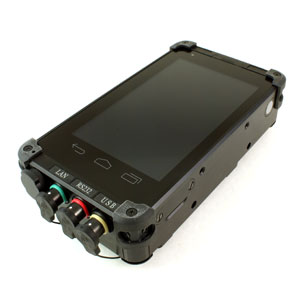 Despite its compact size, the ROCKY DF7A is an extremely flexible platform. On its top surface, you have options for an embedded antenna, as well as two SMA connectors for your choice of external antennas. On the bottom, there are three different locations for your choice of connectors.
Despite its compact size, the ROCKY DF7A is an extremely flexible platform. On its top surface, you have options for an embedded antenna, as well as two SMA connectors for your choice of external antennas. On the bottom, there are three different locations for your choice of connectors.
However, a more radical change was required when a client wanted to install a radio card that that was too large. Our customization experts constructed a larger chassis to accommodate radio card’s size. AMREL has done similar customizations for ROCKY DS11 tablet and ROCKY DB7 handheld.
On May 6, 2004, the FBI arrested Oregon lawyer Brandon Mayfield. A partial print found on a bag of detonators had conclusively linked him to the March 2004 Spanish terrorist bombings. Four separate fingerprint examiners positively identified the latent print as belonging to him.
All four examiners were wrong. In fact, three weeks before Mayfield was arrested Spanish officials had informed the FBI that they had matched the partial print to an Algerian man named Daoud Ouhnane. Still, the FBI believed their own experts and arrested Mayfield. Eventually, Mayfied sued for wrongful arrest and imprisonment, as well as civil rights violations, and won $2 million.
Clearly this was a freak occurrence that couldn’t possibly ever have happened again. Except it did. In connection with a 1994 murder, examiners had positively matched Beniah Dandridge’s fingerprints to ones found at the crime scene. In 2015 new examinations disputed the identification, and Dandridge was cleared of charges. He was released in 2015 after serving 20 years of a life sentence.
Although there is no empirical scientific proof of a fingerprint’s uniqueness to a given individual, no one really doubts this is true. The real problem is latent prints, i.e. those prints found on a crime scene, which are often smudged and partial.
The very first person who doubted the usefulness of latent fingerprints was the very first person in modern times who proposed using fingerprints to solve crimes, i.e. Henry Faulds, a Scottish doctor. He wrote:
“The least smudginess in the printing of them might easily veil important divergences … with appalling results…. (police were) “apt to misunderstand or overstrain, in their natural eagerness to secure convictions.”
Despite a century plus of use by the courts, Henry Faulds objections remain surprisingly sound. No empirical or established standards exist for matching latent prints.
Nor are challenges to the legality and scientific basis of fingerprints limited to desperate defense attorneys. In 2007, a judge in Maryland judge ruled fingerprint evidence in a death penalty case was inadmissible, because it was “a subjective, untested, unverifiable identification procedure that purports to be infallible.” In 2002, Judge Louis Pollack ruled that fingerprint identification was not a legitimate form of scientific evidence. He later reversed himself. Since 1999, nearly 40 judges have considered whether fingerprint evidence meets federal or state standards for the admissibility. All have ruled in favor of the status quo, but many think that the very existence of so many challenges is worrisome. Even the National Academy of Sciences (NAS) has raised doubts and has called for vigorous scientific investigations.
In fact the NAS has conducted one study about the accuracy of latent fingerprint matching. Excerpts from their conclusions:
“False positive errors (erroneous individualizations) were made at the rate of 0.1% and never by two examiners on the same comparison.
“The majority of examiners (85%) committed at least one false negative error, with individual examiner error rates varying substantially,
“This lack of consensus for comparison decisions has a potential impact on verification: Two examiners will sometimes reach different conclusions on a comparison.”
A 0.1% false positive error (claiming a match that does not exist) may not sound like much. However, consider thousands of fingerprints are processed every year. If the above false positive rate is correct, it is safe to assume that at least some individuals will be erroneously matched.
It is extremely unlikely that the courts will discard over one hundred years of legal precedent and throw out fingerprinting altogether. However, we can expect more challenges in the future and a growing skepticism among both professionals and the public.
What should Law Enforcement Officers do?
- Strictly enforce current standards regarding evidence collection and processing. This is just good police work, and will become more critical as legal and scientific challenges persist.
- Currently only about half of fingerprint examiners have passed a proficiency exam by the International Association of Identification, the profession’s certifying organization. While there is no evidence that certified examiners are less prone to mistakes, it would be appropriate if all working examiners have passed the test, if nothing else, just to deflect attacks by attorneys.
- Educate the public in general and jurors specifically. There has been growing apprehension about the “CIS effect,” i.e. the public having unrealistic expectations about forensic evidence. This had led to prosecutors explaining to jurors how the reality of forensics differs from fictionalize versions. With mounting criticism about fingerprints, prosecutors will again find themselves in the role of educators.
- Change the standards of expert testimony. Currently, examiners are trained to testify only when they “’absolutely certain.” This is a highly unscientific standard, and examiners should be taught to state their opinions in the terms of probability. Of course, research has to be done to establish such probabilities; none exist now. There is no scientific research about the chances of two individuals exhibiting the same or similar ridge characteristics.
Although controversy has been so far limited to latent prints, it is reasonable to extrapolate from current trends challenges to verifications and enrollments as well. Police officers are already powerfully motivated to take good quality prints from enrollees. Access to the FBI’s Automated Fingerprint Identification System (AFIS) require print images that meet high quality (all AMREL handheld biometric devices meet FAP-45, an extremely stringent standard). Good quality sensors, especially Light Emitting Sensors (LES), require fewer retakes, and save time. In addition to these established reasons, high-quality fingerprint images also provide a credible defense against legal attacks.
In the long run, it is up to the court of science, not the court of law, to establish the true credibility of fingerprint evidence. In the meantime, law officers’ only option is to pursue their duties with excellence and the best equipment they can acquire.
American Reliance, Inc.
789 N Fair Oaks Ave,
Pasadena, CA 91103
Office Hours
Monday-Friday:
8:00 am – 5:00 pm PST
Saturday: Closed
Sunday: Closed
Main: +1 (626) 482-1862
Fax: +1 (626) 226-5716
Email: AskUs@amrel.com
Blog Posts
Mobile Biometric Solutions
Mobile Biometric Smartphones & Tablets
BioFlex S® Commercial Smartphones
BioSense AT80B | 8″ Android Biometric Tablet
BioSense PA5 | 10.1″ (Gen 2) Android Biometric Tablet
BioSense PA5 | 10.1″ Android Biometric Tablet
BIOPTIX PM3B | 7″ Windows Biometric Tablet
BIOPTIX PM5B | 10.1″ Windows Biometric Atom Tablet






